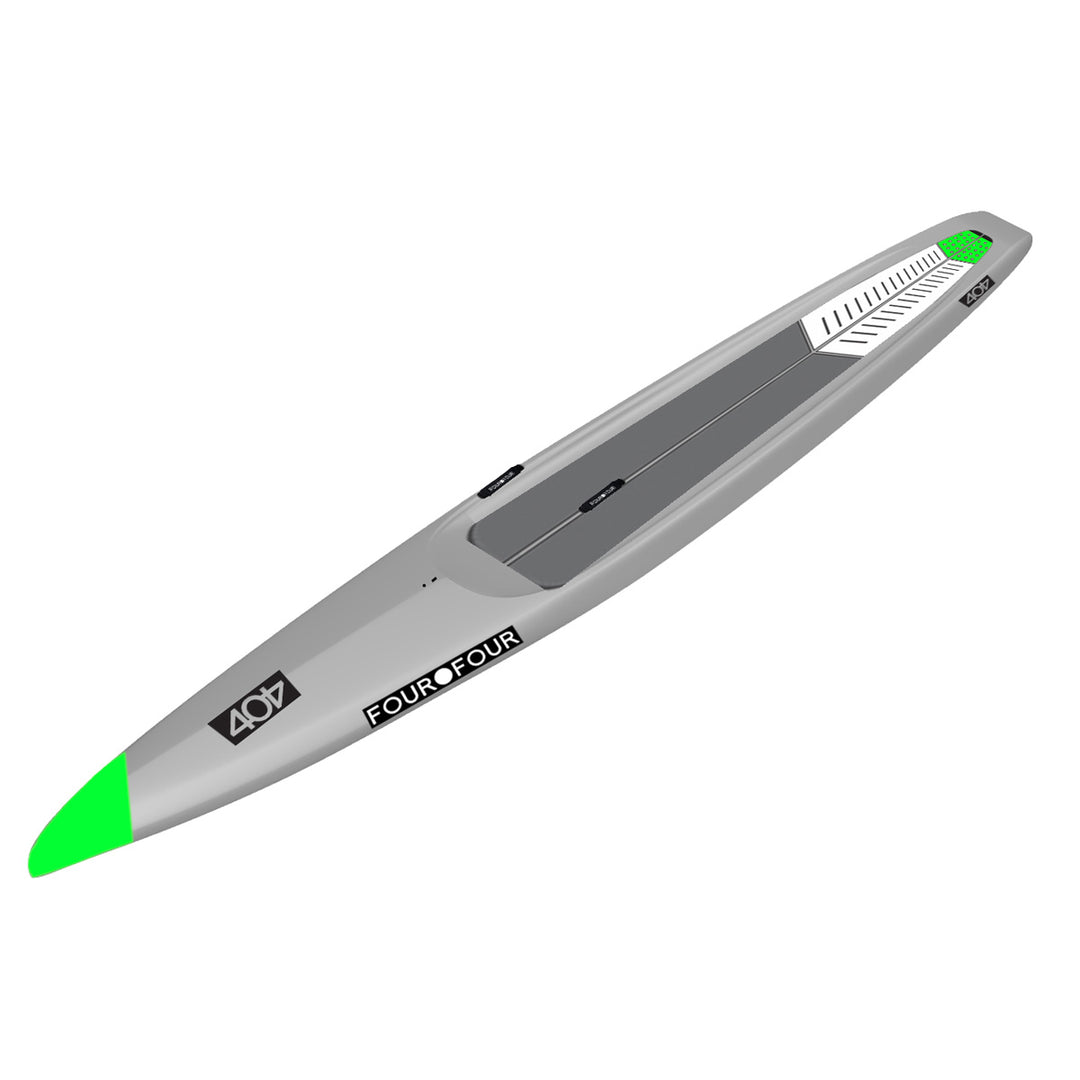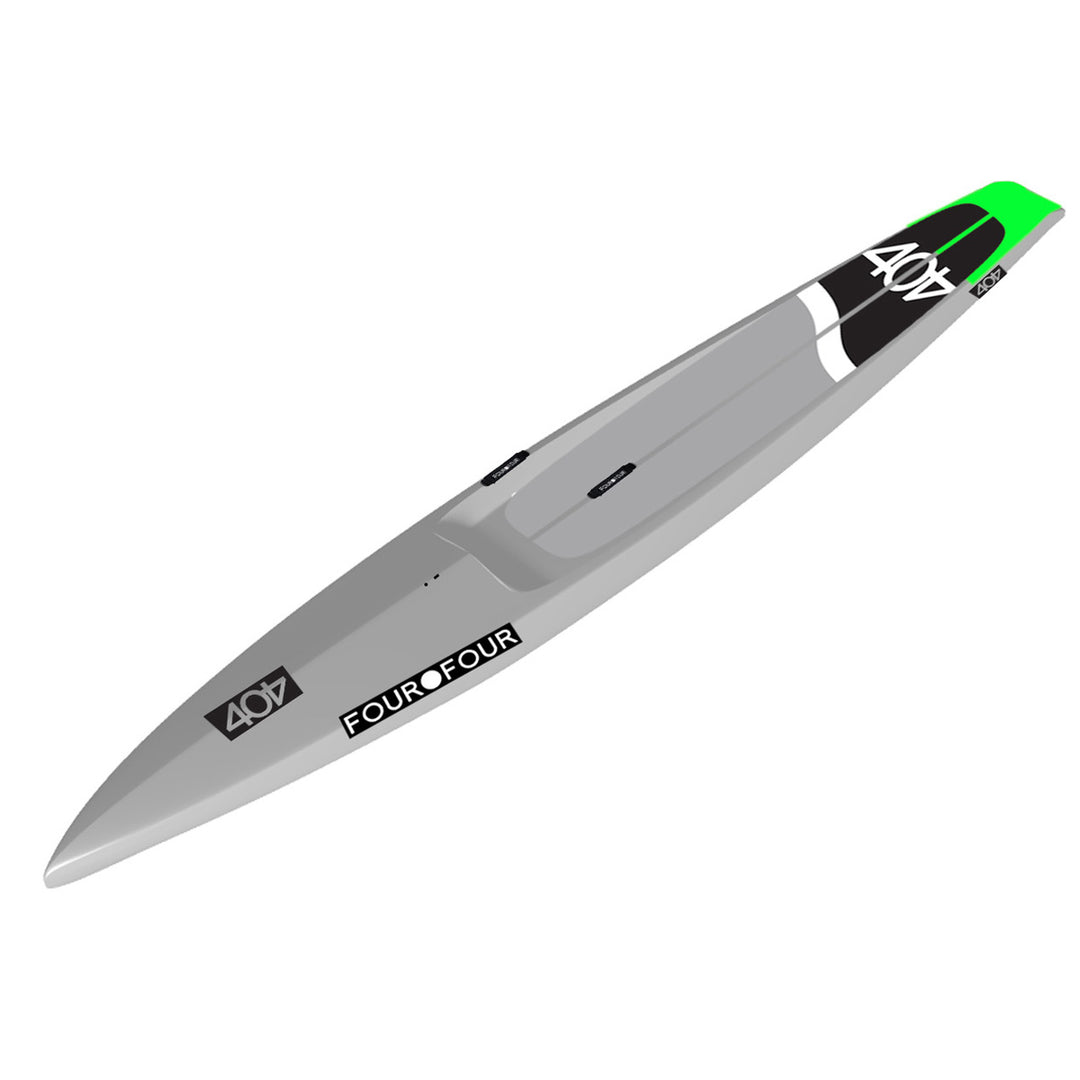WHAT TO CONSIDER WHEN PICKING YOUR CORRECT RACEBOARD MODEL AND SIZE
BOARD DESIGN
404 is one of the leading sup board design companies in the world. We noticed most board designers were only changing width and height on race boards. As the riders got more talented, they would make the boards narrower. Then the boards would sink more, so they would raise the rails and make the board thicker, then lower the cockpit so paddlers could stand on it. However, there was very little thought ever put into changing the shape of the Hull to help increase speed, efficiency and stability for the rider. As life long paddlers from a variety of paddling and ocean sports, we at 404 recognized there was a limit to how narrow aboard could be made. So we decided to take our collective knowledge and experience and took the approach of redesigning the Hull of the SUP Race Board. We started by nailing down a few specific needs that most SUP Racers want when looking at a race board.
-
They Need to be Fast!!!!
-
They Need to be Stable!!!!!
-
They Need to be Stable when paddling fast!!!!
-
They Need to be able to handle many water conditions!!!!!!!!!!
NEW MEASURABLES
While developing the measurement for rider volume displacement, we realized that the true water line for any race board is not only determined by a rider's size, but also the size of the waves they would be riding in. Therefore we developed race boards that work for different sized riders and different sized waves.
SUGGESTED VOLUMEThere is a common misconception that total volume is needed to calculate your desired board size. Unfortunately, total board volume alone is a very poor determining factor for board selection.
Instead we calculate your Rider volume displacement and predict water conditions to accurately show a board's true water line. Using your boards true water line and your experience level, we can accurately suggest different sizes and models that will provide maximum efficiency for you and the paddling condition
If a rider is under the suggested rider volume displacement, then the board hull will still perform at maximum efficiency. However, if a rider or water conditions exceed the predicted size, then they will not be riding the true waterline, and the hull design will not be used to its maximum potential.
At 404, we are the first and currently only board company to suggest a board model and width based on your Rider Volume Displacement, measured skill level and predicted water conditions. We calculate your Rider volume displacement to accurately show a board’s true water line when riding. Using computer simulation, accounting for the natural pitch and roll of the board based on predicted water conditions (Surf, Flat, Upwind, Downwind), we can accurately determine if the paddler will be riding the designed part of the hull to maximum efficiency. This information is what is used to determine a rider’s optimal suggested Board model and Size.
SUGGESTED WIDTH
The suggested width of a board is another poor measurement when it comes to board selection. When selecting a board to ride there are many other factors one should consider. First off, the width measurement of the board is not always taken in the middle of the board and is rarely ever taken in the same place. Instead, the width is taken wherever the single widest point of the board may be. Therefore, this measurement tells you very little about the board, its performance, or its stability without several other key factors. Second, most boards do not perform the same at different widths unless careful consideration is put into rider volume displacement, rail transition points, and board rocker locations. Although wider boards are inherently more stable, it is important to know rider volume displacement in order to properly adjust the hull to perform at maximum efficiency.
Each of our board models come in multiple width options. Since we design each HULL to function at a particular depth, we do not just widen our boards. We carefully redesign each width so that the Hull Design works with the board rocker, rail height, and true water line from the rider volume displacement measurement.



